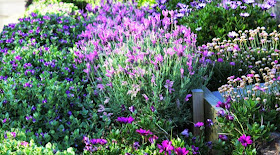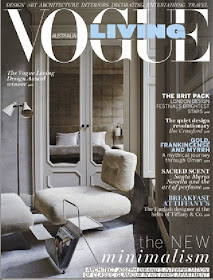When you travel for work, it's easy to get stuck into the same old 'the Milk Run' (as a friend calls it) of staying in same trusted hotels, strolling the same favourite routes and neighbourhoods; browsing at the same beloved boutiques; dining at the same restaurants (with friends who love them as much as you do) and even visiting the same museums.
But every now and then it's important, I think, to step off the Milk Run and discover cities anew—just as you did the first time you went overseas. Changing the pace and the paths you take can renew your sense of wonder at places, and make you fall in love with destinations all over again.
This happened to me this week.
In the spirit of this new 'Gratitude Attitude' that we're all joyfully adopting, I decided to try and uncover parts of London and Paris I'd never seen.
I'm here for a few days to source textiles and fashion places for new books, including the Paris book that's been stuck behind a writer's block. For the last few months I've been reluctant to leave my partner at home after a few very sad months, but the state election is on, our house is in chaos because of it (my partner works in politics part-time), and so it seemed like a good time to finally GET OUT OF TOWN and find inspiration again!
As it turned out, the last week of November is the perfect time to travel: Paris hotels are dirt cheap (I found many for $100/n), the Christmas lights are twinkling, and the weather is still gentle. More than that, people are busy and so things that would normally be booked out are available. But the most wonderful thing about getting off the ol' Milk Run is discovering a new side to Paris and London.
As it turned out, the last week of November is the perfect time to travel: Paris hotels are dirt cheap (I found many for $100/n), the Christmas lights are twinkling, and the weather is still gentle. More than that, people are busy and so things that would normally be booked out are available. But the most wonderful thing about getting off the ol' Milk Run is discovering a new side to Paris and London.
Let me show you what I mean.
Every month, the V&A Museum has a tour of its archives. I'd never bothered with it before as it's often over-subscribed, but this week there was a place, so I cleared a few hours to try it.
Oh my. What a textile lover's dream.
Held at Blythe House in West Kensington, the archives are where the museum's collections of fashion and textiles are stored when they're not on show. Our group only saw one room but there were 54,000 pieces in that one room. Rows and rows of vintage Dior, Givenchy, Balenciaga, Chanel and so on... I can't tell you how amazed we all were. The gasps seem to rise higher and higher.
I dare not show you much as I'm not sure how much we're allowed to reveal (the security was tighter than MI5!), but I can tell you it's well worth it. If you love fashion and textiles, it's an incredible place to see. The V&T has always been held in high regard by fashion and textile lovers but this team should be applauded for their dedication to preserving such magnificent history.
Another little-explored section of London—at least for me—is the northern part of Notting Hill, and having heard about the wonders of The Cloth Shop, a fabulous fabric resource in W10, I decided to head north.
(Tip: If you want to see Portobello Road, go on Fridays when there are no crowds. It's bliss.)
The Cloth Shop is a secret treasure trove of textile goodies in the midst of the bustling markets: a store full of beautiful linens (some as little as 12 pounds) and striped bolts galore.
The staff is also lovely. There's a cat too, who happily sits on all the expensive trimmings.
While you're there, pop around the corner to Alice Temperley, a designer loved by both British celebs and Australian expats for her intricately detailed pieces. (link)
She has stores in King's Road and Mayfair, but this is her original, and is still her private atelier.
This house is on the way to Temperley.
If you look carefully, the brass plaque says 'BANK ROBBER'.
Clearly a thief with wit and style.
I'd also never really stopped to notice the flower stalls in London before. This as one filled with Christmas bouquets in shades of crimson and magenta. Just beautiful.
More London cuteness. I can't believe I've never seen this side of Notting Hill before.
But perhaps my biggest London 'discovery' has been the bedrooms of Blakes Hotel.
Which have to be seen to be believed.
Most design lovers and hotel hedonists know about Blakes—it was the first 'boutique hotel' in the world. Like many, however, I'd never really spent much time here. Until now. With cheap November deals (try Sundays and Mondays for the best bargain prices), I booked a night.
They kindly gave me the red-and-white room. Which was like walking into an urban oasis on a cold London afternoon.
This is the bathrom. Balcony and all.
(Can you see the ceiling? It's all lined in fabric. Incredible.)
The detail in the curtains, curtain pulls and door handles was enough to make a design lover gasp.
Apparently Lady Gaga stays in a similar red-lined room here. A room that, incidentally, has just been voted The Most Romantic Hotel Room In The World by Mr and Mrs Smith Guides.
Here's another room, which Amelia, the gorgeous reservations girl, kindly showed me.
The price for this room is incredibly cheap, considering the design.
If you love fabrics, this is the London hotel for you.
Trust me. You'll be as ga-ga as Lady Gaga.
I'm back in London next week, so will post more textile gorgeousness then.
I'm now in Paris for a few days to source fashion, style and design destinations for the new Paris book (just to finish it off), and will post many of my Parisian discoveries this week.
If you'd like to follow on Instagram, the link is here: instagram link
Or here — http://instagram.com/janellemcculloch_author
I'm only new to Insta, but it's a lovely place to browse pix, so hope you follow. I look forward to seeing you there!





















































